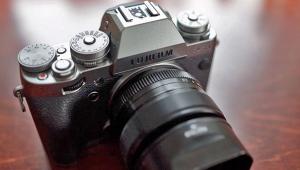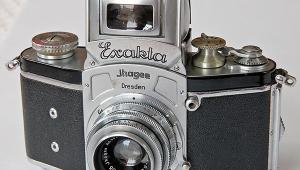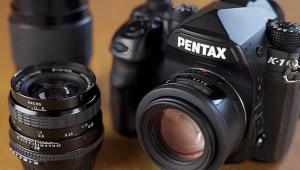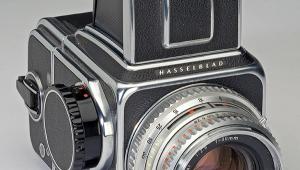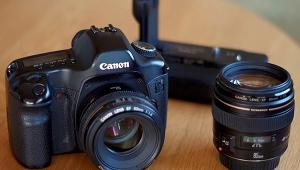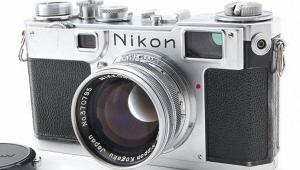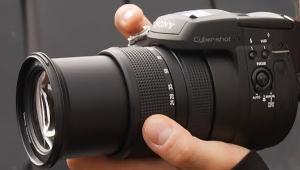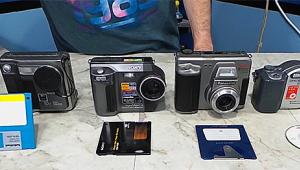The Nikon F6
A State Of The Art Film SLR
Photos © 2004, Stan Trzoniec, All Rights Reserved
 In a world of increasing digital dominance, Nikon has again taken a bold step and introduced a camera that should keep film-based photographers happy for some time to come. Call it a move up for those who never had the privilege of owning a premium camera or a huge upgrade for photographers who now feel they've taken the F5 to its limits, the F6 is certainly a milestone for both the company and the passion of photography.
In a world of increasing digital dominance, Nikon has again taken a bold step and introduced a camera that should keep film-based photographers happy for some time to come. Call it a move up for those who never had the privilege of owning a premium camera or a huge upgrade for photographers who now feel they've taken the F5 to its limits, the F6 is certainly a milestone for both the company and the passion of photography.
For the former, taking it through its paces within the pages of its impressive 191-page instruction manual will be quite a feat. For those established with the F5 and who want to trade up, we'll start right there and highlight all the new--and most important--features of this handsome Nikon F6.
For serious photographers using the previous F-series of cameras, right out of the box the feeling among all will be that something is missing. They would be right of course, as Nikon has "cut" the battery box from the base (like the F100) of the camera and now has it powered by twin 3v lithium batteries that are inserted into the left side of the camera base. As I like a little more bulk to my cameras, especially when shooting all day, I had Nikon ship the optional MB-40 "Multi Power Battery Pack" that increases the frames per second (fps) ratio (from 5.5 to 8 fps depending on the shutter speed), adds more comfort when shooting vertically with additional controls, and all with only a modest 18 percent gain in the overall height of the camera. A rechargeable pack is also included in the option package for those who prefer this feature.
 |
|
|
The F6 has an aluminum-alloy die-cast chassis with a magnesium-alloy front body and related covers for durability. It is sealed in the right places to resist the rigors of nasty weather and has the ergonomics to make the camera feel right at home in your hands from the moment you pick it up. The right side of the body has the usual grip for easy holding no matter the lens attached, controls are placed in the right places (almost a carbon copy of the F5), and I found the camera very intuitive to use--this should also be the experience even if you've never had a Nikon SLR in your hands before.
 |
 |
||
|
|
This new F6 is loaded with features. For instance, they've taken the 11-area sensor design from the new generation of D-series of digital cameras and incorporated it in the F6. Part of the package is the Nikon Multi-CAM 2000 autofocus sensor, which delivers fast response to challenging conditions while ensuring sharp focus over a wider area of the fast-moving scene unfolding in front of you. This is further enhanced by the inclusion of Dynamic autofocus that shifts the point of focus from one sensor to the other, allowing the photographer to concentrate on the action and not the mechanics of the camera. Teamed up with my Nikkor 400mm f/2.8 AF-S lens and the brand-new TC-17E II Teleconverter (see sidebar), I could find nothing wrong as the system worked perfectly every time while shooting drag freight trains just east of the Berkshires in Western Massachusetts.
 |
|
|
Additionally, you have other options when it comes to focus within the sensors. For example, in Dynamic AF mode, you can choose the primary sensor and, if the subject moves, transfer of the action is seamlessly made to the next sensor and the next as the subject moves across the screen. In Group Dynamic AF mode, you can pick a selected group of sensors (right five, center five, or left five) and Dynamic AF mode with Closest-Subject Priority wherein the camera picks the closest subject and holds the focus as it moves into another sensor area.
 |
|
|
In all honesty, I think the biggest advance is within the Custom Settings menu on the camera. At first take, and looking at the back of the camera, you might just think that Nikon slipped a digital camera into your box. Along with the top LCD that gives the operator basic information like shutter speed, f/stop, exposure compensation, battery power, and other related information, the rear panel is a whole new ball game.
- Log in or register to post comments
